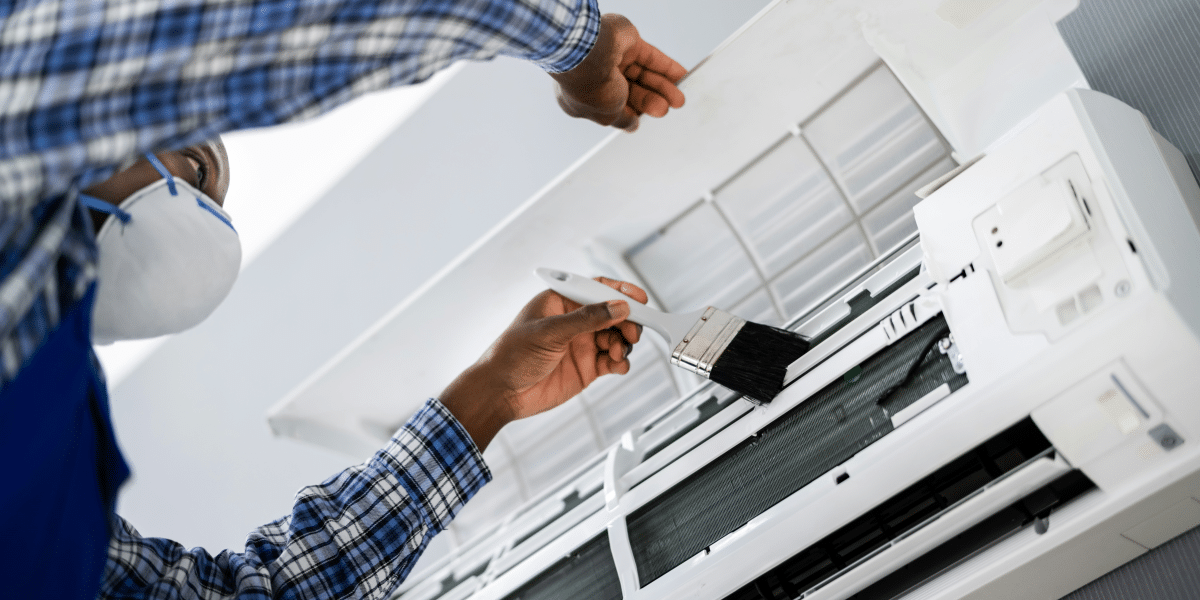Understanding the Importance of Airflow
The convenience of a well-functioning air conditioning system is often noticed when an inefficiency arises, affecting your comfort and peace. Airflow is the circulatory system of your AC unit, and when it’s compromised, it’s usually the first red flag. A decline in airflow could mean the air filter is clogged with dust and particulates, leading to poor air quality and an overworked unit.
Uncovering Hidden Issues Through Inefficient Operation
When your AC starts operating less efficiently, it’s not just an annoyance—it’s a symptom of underlying problems. A sudden increase in your power bill or frequently tripping circuit breakers can point to an AC system in distress. This can be due to various causes, from aging equipment to a malfunctioning thermostat needing recalibration or replacement. Monitoring for efficiency drops and seeking AC repair services can thwart more severe deterioration of the units.
Thorough Air Filter Inspections
Monitoring and maintaining the cleanliness of your air filters are crucial steps in the AC upkeep process. A congested air filter can significantly diminish the quality of air circulating in your home, introducing allergens and reducing the system’s efficiency. Filters must be inspected monthly, especially during high-usage periods, and replacement is recommended as stipulated by the manufacturer’s guidelines.
Ducts and Vents: The Pathway to Clean Air
Occasionally, the problem extends beyond the filter and into the ductwork. Foreign objects, dust accumulation, or even small animals and insects can become obstructive duct blockages. These impediments can compromise the AC’s efficiency and lead to costly power bills.
Noticing Alarming Noises and Visual Indicators
Acoustic cues often indicate that your AC unit isn’t operating as it should. When the hum of a smoothly running system turns into grating, clanking, or hissing, it’s time for concern. These noises could mean anything from a loose belt to a failing compressor—and if these issues are not rectified promptly, they can cause further damage or a complete system breakdown.
Attentive Observation for Impending Repairs
It’s also important to pay attention to visual signs that your AC might be struggling. Indicators like ice formation on the coils or dripping water underneath the unit might suggest a refrigerant leak or a compromised condensation drain—a problem elaborated upon by this U.S. Department of Energy resource. Such visible symptoms should elevate the sense of urgency for homeowners to seek professional help. Minding Temperature Inconsistencies and Comfort Levels
An AC’s capability to maintain a set temperature throughout your home is integral to your comfort. When you notice certain rooms are significantly warmer or cooler than others, it signals that your AC system is not distributing air uniformly. This could be attributed to various factors, including miscommunication between the thermostat and the AC unit or leaks in the ductwork that allow chilled air to escape before reaching its intended destination. Ensuring that temperatures across your home remain consistent is a matter of comfort and an indicator of your AC system’s health and efficiency.
Committing to Regular AC Maintenance
One of the best things you can do for your AC system is to commit to a routine maintenance schedule. This can drastically reduce the likelihood of unwelcome surprises and extend the unit’s lifespan. Scheduled maintenance involves a professional technician inspecting the system, cleaning components, and making any adjustments necessary for optimized performance. Responding to AC Emergencies Promptly
In an AC emergency, such as a complete shutdown during extreme weather, the importance of prompt response cannot be overstated. Delays addressing critical issues extend the period you are without comfortable indoor climate control and can exacerbate the underlying problems, potentially escalating repair costs and downtime.
Refrigerant Leaks: More Than Just a Drop in Cooling
Refrigerant leaks within your AC don’t just threaten the system’s cooling efficiency; they pose a broader environmental concern. The chemicals used in refrigerants contribute to ozone depletion and global warming when released into the atmosphere. Such leaks are hazardous and require specialized handling and repairs, as detailed in this EPA guideline. Experts in AC repair fix the leak and ensure that your system is recharged with the correct amount of refrigerant and compliant with environmental regulations.
The Aging AC: Recognizing Natural Wear and Tear
All mechanical systems are subject to wear and tear over time; your AC is no exception. Its components endure a lot during operation, from the compressor to fans and condenser coils. Being mindful of the wear your system naturally accrues through usage can prompt proactive inspections, which, when conducted regularly, can detect and remedy minor issues before they evolve into more significant problems.
Adapting to Modern Controls with Smart Thermostats
The advent of smart thermostats has provided homeowners with granular control over their home’s climate, often resulting in energy conservation and improved comfort. However, such advanced control can sometimes reveal incompatibility with older AC systems or highlight pre existing issues. A smart thermostat that fails to communicate effectively with an AC unit may indicate deeper malfunctions within the system.
Ensuring Professional Care for Your AC
Engaging with reliable, professional AC repair services is integral to responsible homeownership. They offer expertise in not only repairing immediate issues but also in helping you to understand your system’s specific needs. Choosing the right professionals ensures that your AC receives the best possible care, sustaining optimal performance and enabling a comfortable home environment for you and your loved ones.
Published by: Khy Talara



















